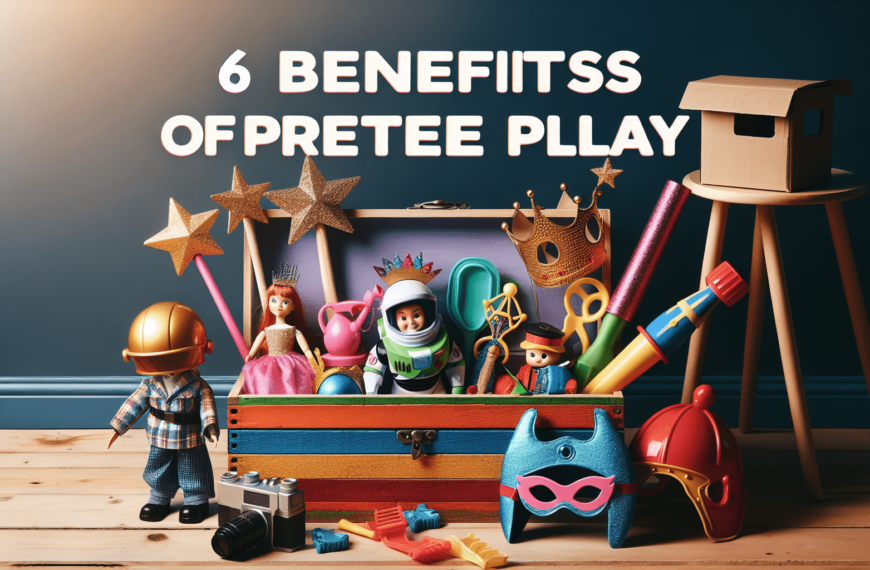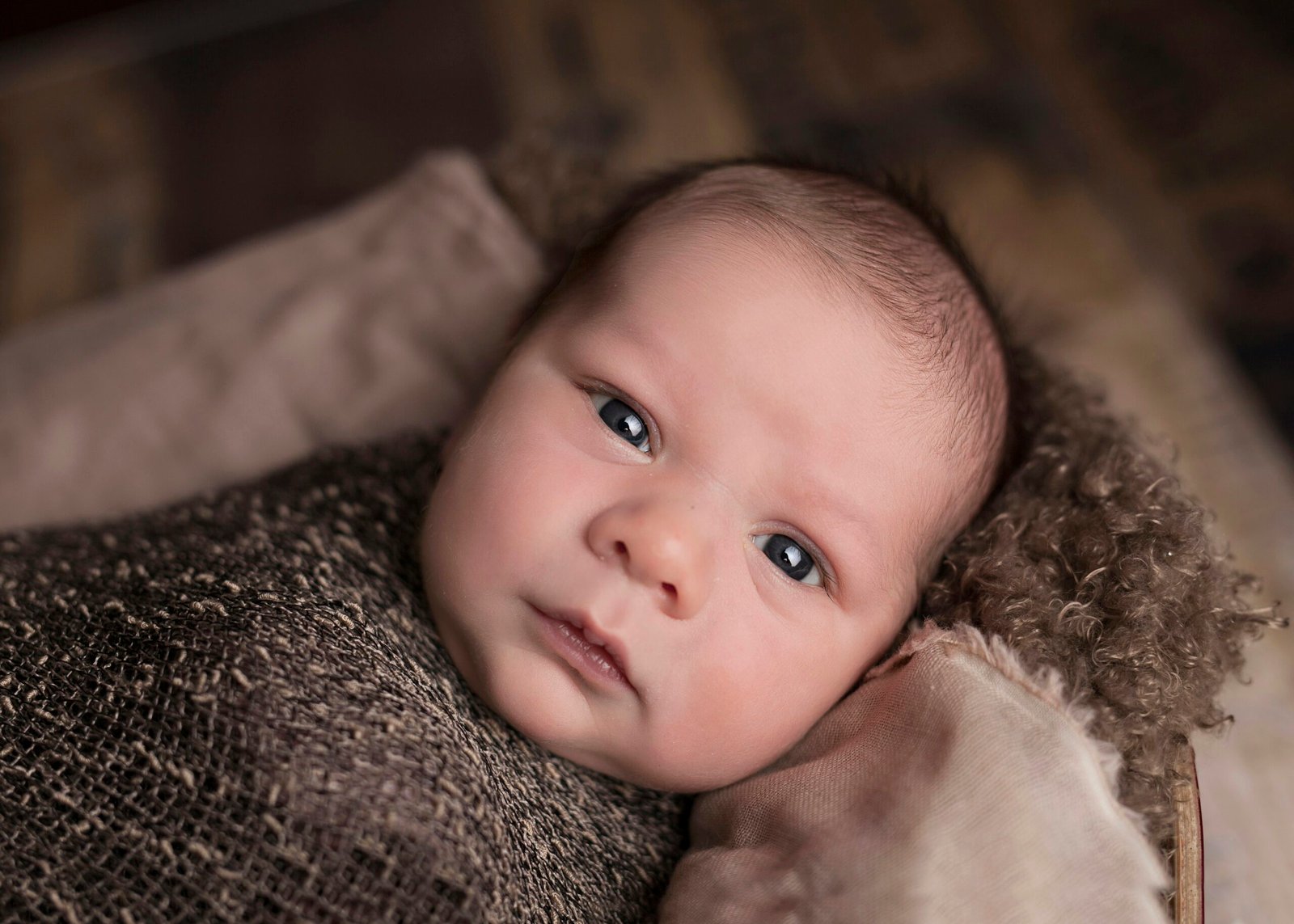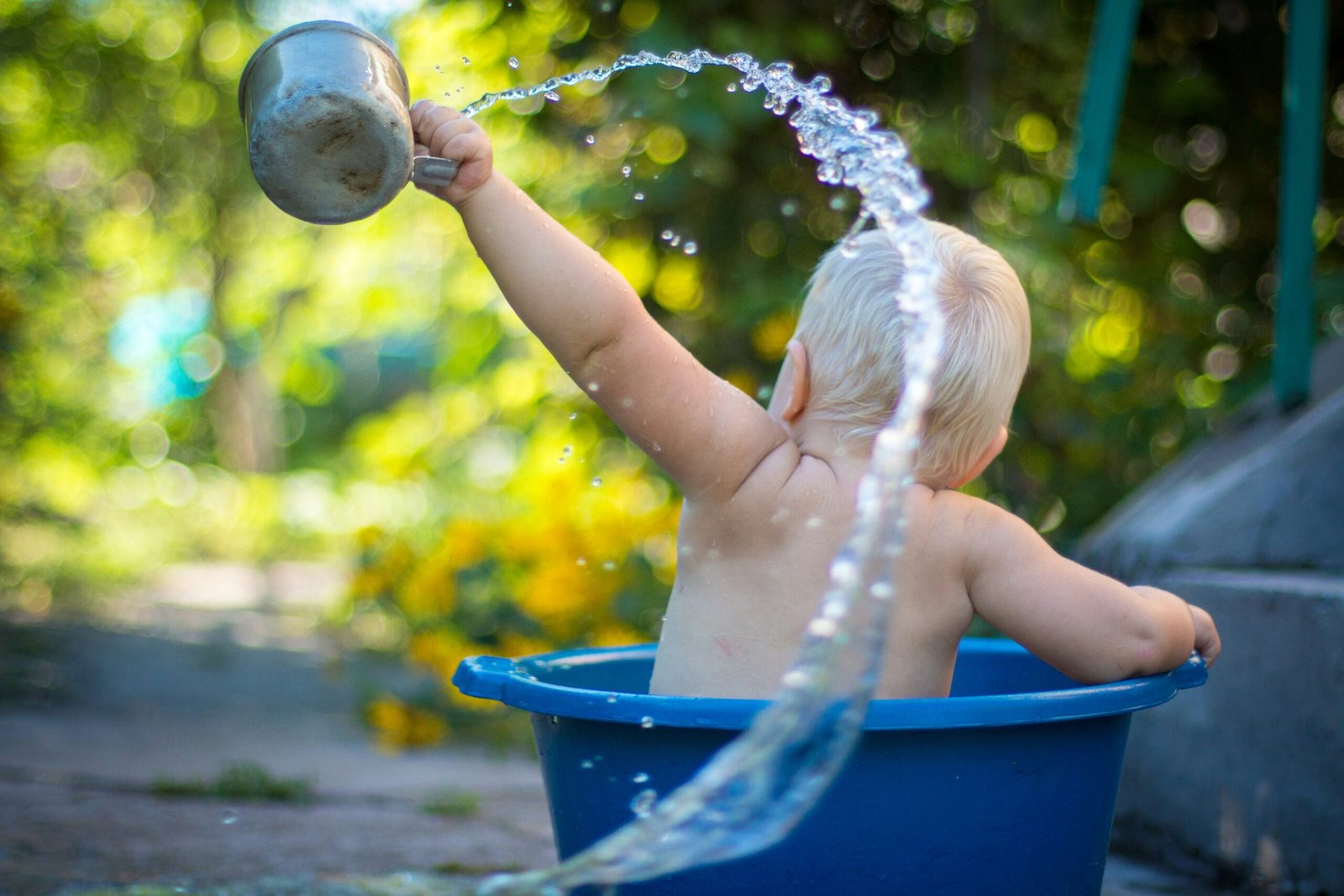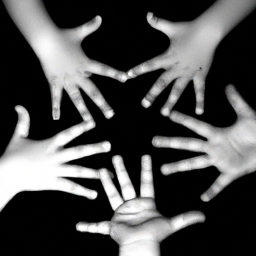“The Bittersweet Transition from 2 to 3 Years Old” explores the emotional journey of a parent as they witness their child grow from being two to turning three years old. The article highlights the mixed feelings of nostalgia and excitement that arise during this transformative period. It reflects on the rapid development and milestones achieved by the child, emphasizing the joy and wonder brought about by their growing independence and blossoming personality. This heartfelt account depicts the continuous passage of time and the desire to hold onto cherished moments just a little longer, capturing the essence of the bittersweet transition from toddlerhood to early childhood.
Read more about the latest articles
The Start of 2 Feels Like Just Yesterday
As parents, we often find ourselves reminiscing about the early years of our children’s lives. It feels like just yesterday that our little ones were turning two, and yet here we are, on the brink of them turning three. The start of the second year of life is a memorable milestone for both parents and children. From birthday celebrations to special moments, it’s a time of reflection and anticipation for what the future holds. The memories of planning parties, creating traditions, and watching our children grow are etched in our minds. We remember the excitement and joy that filled those early days of their second year, and it’s hard to believe how quickly time has passed.
This Stage Hasn’t Been Terrible – It’s Been Magical
There is a commonly held belief that the “terrible twos” are a challenging stage for parents. However, for many parents, this stage is far from terrible. In fact, it is often a time filled with magic and wonder. From the explosion of vocabulary to the development of autonomy, the second year of a child’s life is a time of immense growth and discovery. We witness their personality shining through, and the joy that comes from watching them navigate the world around them is truly special. It’s a stage filled with love, laughter, and awe-filled moments, and as parents, we can’t help but feel privileged to witness it.
Transitioning From 2 to 3 is Happening Too Fast
While the second year of a child’s life may have felt like it lasted forever, the transition from 2 to 3 seems to happen in the blink of an eye. It’s a bittersweet realization for many parents, as they see their little ones transform from toddlers to full-fledged kids. The pace at which children develop during this time can be both exciting and overwhelming. One day they are babbling, and the next they are speaking in full sentences. One day they need constant guidance, and the next they are asserting their independence. It’s a rapid period of growth that can leave parents feeling like they’re struggling to keep up.
The Emotional Rollercoaster of Watching Your Child Grow
As parents, our emotions run high as we witness our children grow and change before our eyes. It’s a mix of pride and sadness, as we see them become more capable and independent while realizing that they are moving further away from being a baby. Nostalgia can also creep in, as we long for the days when they were small and dependent on us for everything. Managing these emotions can be challenging, but there are coping mechanisms we can employ to help us navigate this emotional rollercoaster.
Mixed Feelings of Pride and Sadness
The pride we feel as parents when we see our children reach milestones and develop new skills is unparalleled. It’s a testament to their hard work and determination, and it fills us with a sense of accomplishment. However, this pride is often tinged with a twinge of sadness. We realize that with each new milestone, our children are growing up and becoming more independent. It’s a reminder that they are no longer the tiny babies we once held in our arms. This mix of emotions is normal and natural, and acknowledging and accepting them is an important part of the parenting journey.
Dealing with Nostalgia
Nostalgia can be a powerful emotion, especially when we look back on the early years of our children’s lives. We long for the simplicity and sweetness of those days, and the memories can feel both comforting and heartbreaking. It’s important to allow ourselves to feel these emotions and reflect on the growth and change we have witnessed. However, it’s also important not to dwell in the past or allow nostalgia to overshadow the present. Finding a balance between cherishing the memories and embracing the present moment is key.
Coping Mechanisms for Handling Emotions
To navigate the emotional rollercoaster of watching our children grow, it’s vital to develop coping mechanisms that work for us. Some parents find solace in journaling or talking to a trusted friend or family member. Others find comfort in engaging in self-care activities such as exercise or mindfulness practices. It’s important to find healthy outlets for our emotions and to give ourselves permission to feel and process them. By acknowledging and addressing our emotions, we can better support our children through their own developmental journey.
Celebrating Milestones while Accepting Change
While it can be challenging to let go of the past, it’s important to celebrate the milestones and achievements of our children. Each new skill they acquire and each milestone they reach is a testament to their growth and development. By celebrating these moments, we can embrace the changes that come with them. It’s a way of acknowledging that our children are on their own unique journey and that as parents, it is our role to support and guide them along the way. Embracing change and being present in the moment allows us to fully appreciate the incredible human beings our children are becoming.
The Developmental Milestones of a 3-Year-Old
The transition from 2 to 3 is not only an emotional one, but it also marks a significant period of development for children. Three-year-olds are constantly refining their skills and abilities in various areas of development. Understanding these milestones can help parents support their children’s growth and provide appropriate guidance and stimulation. Here are some key areas of development for 3-year-olds:
Speech and Language Skills
At three years old, children’s speech and language skills continue to evolve rapidly. They are able to use more complex sentences, express their thoughts and feelings, and engage in conversations with others. Three-year-olds also understand basic concepts such as colors, shapes, and numbers.
Cognitive Skills
Three-year-olds are developing their cognitive abilities, including problem-solving, memory, and concentration. They are curious and eager to explore the world around them, asking questions and seeking answers. They can also engage in imaginative play and show an understanding of cause and effect.
Social and Emotional Skills
During this stage, children become more aware of their emotions and the emotions of others. They begin to develop empathy and show increased interest in interacting with their peers. Three-year-olds start to engage in cooperative play and develop basic social skills such as taking turns and sharing.
Physical Development
Motor skills continue to improve during the third year of life. Three-year-olds can walk, run, climb, and jump with more coordination and confidence. They also have better hand-eye coordination, allowing them to build towers, use scissors, and engage in more precise movements.
Understanding these developmental milestones can help parents create an environment that supports their child’s growth and provides appropriate opportunities for learning and exploration.
Preparing Your Child for the Transition
As the transition from 2 to 3 approaches, it’s essential to prepare your child for the changes they will experience. Establishing routines, encouraging independence, introducing new activities, and supporting emotional growth are key strategies to help smooth the transition.
Establishing Routines
Routines provide children with a sense of security and predictability. By establishing consistent daily routines, you can help your child feel more prepared for what’s to come. Set regular meal times, nap times, and bedtimes to create a structured environment. This predictability can help your child feel more secure and make the transition smoother.
Encouraging Independence
As children approach their third year, they naturally become more independent. Encourage this independence by allowing your child to complete age-appropriate tasks on their own. This may include dressing themselves, brushing their teeth, or putting away their toys. Providing opportunities for independence builds confidence and prepares them for the challenges of the upcoming year.
Introducing New Activities
Three-year-olds are eager to explore and learn. Introduce new activities and experiences to stimulate their curiosity and cognitive development. This can include engaging in arts and crafts, reading books, visiting museums, or participating in age-appropriate classes or sports. By exposing your child to new activities, you can help them develop a love for learning and expand their horizons.
Supporting Emotional Growth
Emotional growth is an integral part of a child’s development. Encourage emotional expression and provide a safe space for your child to share their feelings. Help them identify and label their emotions and teach them healthy coping mechanisms, such as deep breathing or counting to ten. Supporting their emotional growth will enable them to navigate the changes and challenges that come with turning three.
Maintaining a Strong Bond with Your Toddler
During this transition period, it’s crucial to maintain a strong bond with your child. Quality time, open communication, creating traditions, and affectionate affirmation all contribute to a healthy parent-child relationship.
Quality Time and One-on-One Attention
Spending quality time with your child is essential for building and maintaining a strong bond. Engage in activities that your child enjoys, such as playing games, reading together, or going for walks. Set aside dedicated one-on-one time to focus on your child and strengthen your connection. This undivided attention allows your child to feel seen and valued, fostering a deeper bond.
Open Communication
Communication is key to understanding your child’s needs, desires, and feelings. Encourage open and honest communication by actively listening to your child and validating their thoughts and emotions. Create a safe space where your child feels comfortable expressing themselves without fear of judgment or criticism. By promoting open communication, you can maintain a trusting and loving relationship.
Creating Traditions and Rituals
Creating traditions and rituals provides a sense of stability and togetherness for your child. Whether it’s a weekly family movie night, a special goodbye routine when you drop them off at preschool, or a monthly outing to their favorite park, these traditions help build lasting memories and strengthen the bond between parent and child. They also provide opportunities for your child to feel grounded and connected.
Affection and Affirmation
Expressing love and affection is crucial to maintaining a strong bond with your child. Hugs, kisses, and cuddles provide reassurance and make your child feel secure. Affirmation and praise for their accomplishments and efforts boost their self-esteem and strengthen their emotional connection with you. Regularly expressing affection and offering positive affirmations helps your child feel loved and appreciated.
Dealing with Behavior Changes
As children transition from 2 to 3, they may exhibit behavior changes that can be challenging for parents. Understanding regression, setting clear boundaries, implementing positive discipline techniques, and encouraging problem-solving skills can help navigate these behavioral changes.
Understanding Regression
Regression is a common occurrence during times of transition and change. It refers to a temporary shift in behavior where children exhibit behaviors they had previously outgrown. This can include things like increased tantrums, regression in toilet training, or separation anxiety. Understanding that regression is a normal response to change can help parents respond with patience and empathy.
Setting Clear Boundaries
Clear boundaries provide children with a sense of structure and security. Establish age-appropriate rules and expectations and communicate them to your child in a clear and consistent manner. Be firm but loving in enforcing these boundaries, and provide explanations for why certain behaviors are not allowed. Consistency and follow-through are key to helping your child understand and respect boundaries.
Positive Discipline Techniques
Positive discipline focuses on teaching and guiding children rather than punishing them. Use strategies such as redirection, positive reinforcement, and natural consequences to shape behavior. Offer praise and rewards for appropriate behavior, and provide gentle guidance and redirection when your child is misbehaving. By focusing on positive discipline techniques, you can encourage your child to make better choices and learn from their experiences.
Encouraging Problem-Solving Skills
As children grow, it’s important to empower them with problem-solving skills. Encourage your child to identify problems and brainstorm possible solutions. Guide them through the process of evaluating the pros and cons of each solution and help them implement their chosen solution. This teaches them important decision-making skills and builds their confidence in their ability to solve problems independently.
Read more about the latest articles
Preparing Yourself for the Transition
As parents, it’s essential to prepare ourselves for the transition from 2 to 3 as well. Managing parental anxiety, letting go of control, embracing the next chapter, and prioritizing self-care and support systems are crucial aspects of preparing ourselves for the changes ahead.
Managing Parental Anxiety
The transition from 2 to 3 can be anxiety-inducing for parents. It’s important to manage parental anxiety by focusing on the present moment and staying mindful of our thoughts and emotions. Practice relaxation techniques, such as deep breathing or meditation, to reduce anxiety and promote a sense of calm. Seek support from other parents or professionals if needed, as talking about your concerns can alleviate anxiety.
Letting Go of Control
As our children grow, it becomes necessary to let go of the control we once had over their lives. Understand that their development and journey are theirs to navigate, and it’s our role to guide and support them along the way. Trust in the skills and values you have instilled in your child, and have faith in their ability to make good decisions and learn from their mistakes. Letting go of control can be freeing and allows both parent and child to grow together.
Embracing the Next Chapter
While it’s natural to feel a sense of sadness or nostalgia as our children grow, it’s important to embrace the next chapter of their lives. Recognize that each stage of their development brings new opportunities for love, joy, and connection. Embrace the challenges and changes that come with each new phase, knowing that they contribute to the incredible journey of parenthood.
Self-Care and Support Systems
Taking care of yourself is essential during times of transition and change. Prioritize self-care activities, such as exercise, relaxation, or pursuing hobbies that bring you joy. Seek support from your partner, family, and friends, as having a strong support system can provide comfort and guidance during this transition. Remember that you cannot pour from an empty cup, and by taking care of yourself, you can better support your child through this period of change.
Conclusion
The transition from 2 to 3 is a significant period of growth and change for both children and parents. It’s a time filled with mixed emotions, nostalgia, and anticipation for what’s to come. By understanding the developmental milestones, preparing our children for the transition, maintaining a strong bond, dealing with behavior changes, and preparing ourselves, we can navigate this transition with grace and love. Embracing the bittersweet nature of watching our children grow allows us to fully appreciate the remarkable journey of parenthood.

















